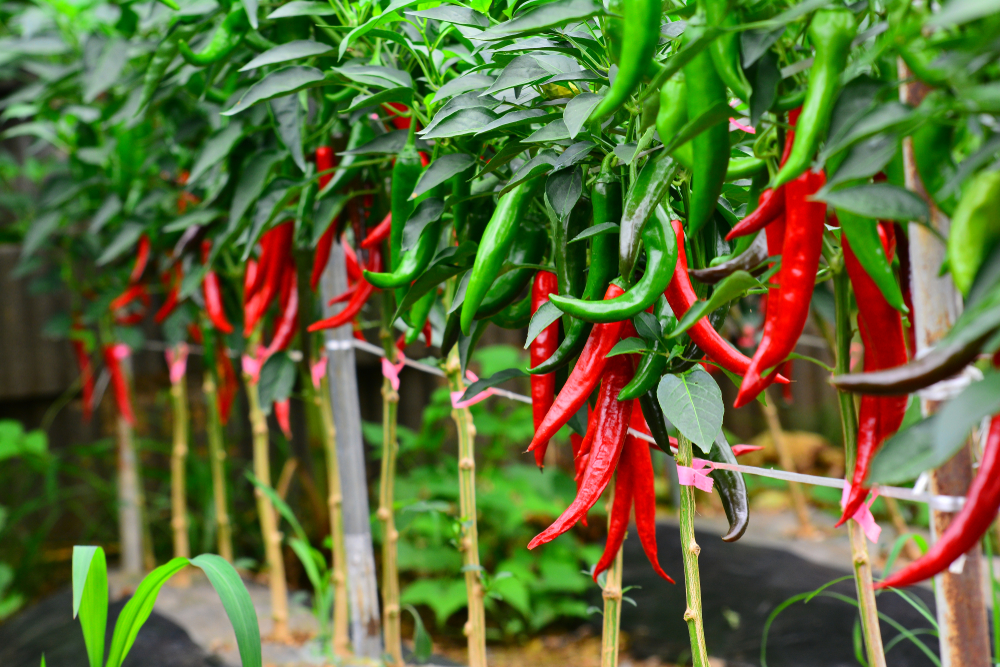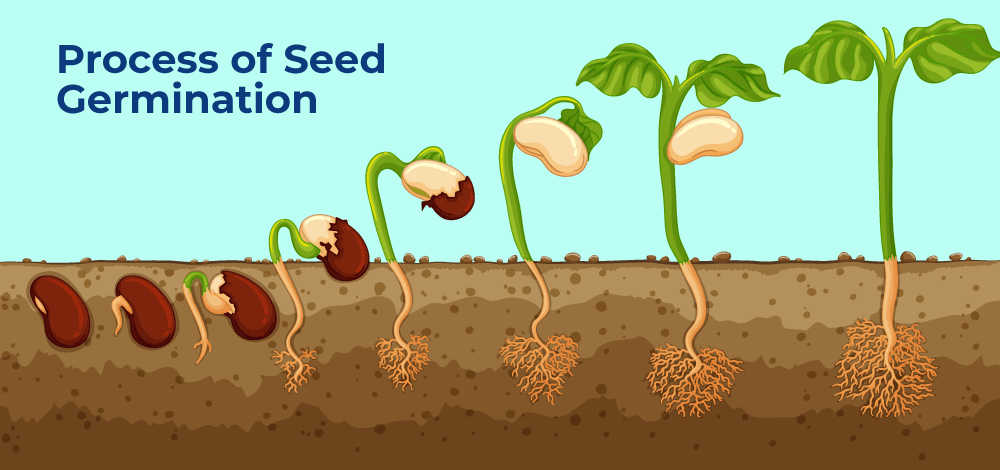Master Growing Chili Peppers from Seeds Today

Are you ready to spice up your life and your garden? Growing chili peppers from seeds is not just a rewarding hobby; it's a journey that can transform your home gardening experience. Imagine the satisfaction of nurturing a tiny seed into a flourishing plant that produces fiery, flavorful peppers. Whether you're a seasoned gardener or a curious beginner, this guide will walk you through the entire process, from seed germination to pepper plant care. So, let's dive in and discover the best houseplants for mental health and the joy of chili pepper cultivation!
Why Grow Chili Peppers?
Chili peppers are more than just a spicy addition to your meals. They offer a host of health benefits, including boosting your metabolism, aiding digestion, and even improving your mood. Plus, the process of growing them can be incredibly therapeutic. There's something deeply satisfying about watching a seed sprout, grow, and eventually bear fruit. It's akin to nurturing a small life, and the rewards are both tangible and intangible.
Getting Started: Seed Selection and Preparation
Choosing the Right Seeds
The first step in your chili pepper cultivation journey is selecting the right seeds. There are countless varieties to choose from, each with its unique flavor profile and heat level. Some popular options include:
- Jalapeño: Mild to medium heat, great for salsas and stuffing.
- Habanero: Very hot, perfect for spicy sauces and marinades.
- Ghost Pepper: Extremely hot, for those who love a challenge.
- Bell Peppers: Sweet and mild, ideal for salads and stir-fries.
Preparing Your Seeds
Once you've chosen your seeds, it's time to prepare them for planting. Some seeds may benefit from a process called scarification, which involves lightly scratching the seed coat to help with water absorption. This can be done using sandpaper or a nail file. For larger seeds, soaking them in water overnight can also aid in germination.
Seed Germination: The First Steps
Creating the Perfect Environment
Seed germination is the critical first step in growing chili peppers. To ensure success, you need to create the ideal environment. Start by filling small pots or seed trays with a well-draining seed-starting mix. Plant your seeds about 1/4 inch deep and keep the soil consistently moist but not waterlogged.
Temperature and Light
Chili pepper seeds germinate best in warm temperatures, typically between 70-85°F (21-29°C). You can use a heat mat to maintain consistent warmth. Once the seeds sprout, they need plenty of light. A south-facing window or a grow light can provide the necessary illumination.
Patience is Key
Germination can take anywhere from 7 to 21 days, depending on the variety and conditions. Be patient and keep an eye on your seeds. Once they sprout, you'll see tiny green shoots emerging from the soil. It's an exciting moment, like watching a baby take its first steps!
Caring for Your Pepper Plants
Watering and Fertilizing
Proper pepper plant care is essential for healthy growth. Water your seedlings regularly, ensuring the soil remains moist but not soggy. Overwatering can lead to root rot, while underwatering can stunt growth. As your plants grow, you can introduce a balanced fertilizer to provide essential nutrients.
Transplanting
Once your seedlings have developed their first set of true leaves, it's time to transplant them into larger pots or directly into your garden. Choose a sunny spot with well-draining soil. If you're planting outdoors, make sure the danger of frost has passed.
Pest and Disease Management
Like any plant, chili peppers can be susceptible to pests and diseases. Common issues include aphids, whiteflies, and fungal infections. Regularly inspect your plants for signs of trouble and treat any issues promptly. Organic pesticides and fungicides can be effective solutions.
Growing Tips for Success
Provide Adequate Support
As your pepper plants grow taller, they may need support to keep them upright. Stakes or cages can help prevent your plants from toppling over, especially when they start producing heavy fruits.
Prune for Better Yields
Pruning can encourage bushier growth and more fruit production. Remove any dead or diseased leaves and pinch back the growing tips to promote branching. Think of it like giving your plant a haircut to stimulate new growth.
Harvesting Your Peppers
The moment you've been waiting for—harvest time! Peppers can be picked at any stage of ripeness, depending on your preference. Green peppers are less sweet and milder, while red peppers are sweeter and more flavorful. Use sharp scissors or pruners to cut the peppers from the plant.
The Mental Health Benefits of Gardening
Gardening, including chili pepper cultivation, offers numerous mental health benefits. It's a form of mindfulness, allowing you to focus on the present moment and connect with nature. The act of nurturing a plant can be incredibly soothing, reducing stress and anxiety. Plus, the sense of accomplishment when you harvest your first peppers is unmatched. It's like completing a challenging puzzle—satisfying and rewarding.
Conclusion
Growing chili peppers from seeds is a journey filled with learning, patience, and ultimately, delicious rewards. From seed germination to pepper plant care, each step brings you closer to a bountiful harvest. Not only will you enjoy the fruits of your labor, but you'll also reap the mental health benefits of home gardening. So, why wait? Start your chili pepper cultivation adventure today and experience the joy of watching your seeds grow into vibrant, productive plants. Click here to learn more about the best houseplants for mental health and get started on your gardening journey!
FAQs
What is the best time to start chili pepper seeds indoors?
- The best time to start chili pepper seeds indoors is about 8-10 weeks before the last expected frost date in your area. This gives the seedlings enough time to grow before being transplanted outdoors.
How often should I water my chili pepper plants?
- Chili pepper plants should be watered regularly, ensuring the soil remains consistently moist but not waterlogged. Aim for about 1 inch of water per week, adjusting based on rainfall and soil conditions.
What are some common pests that affect chili pepper plants?
- Common pests that affect chili pepper plants include aphids, whiteflies, and spider mites. Regularly inspect your plants for signs of infestation and treat promptly with organic pesticides if necessary.
Can I grow chili peppers in pots?
- Yes, chili peppers can be grown successfully in pots. Choose a pot that is at least 12 inches deep and wide to provide ample room for root growth. Ensure the pot has good drainage to prevent root rot.
How do I know when my chili peppers are ready to harvest?
- Chili peppers can be harvested at any stage of ripeness, but they are typically ready when they reach their full color and size. Green peppers can be picked earlier for a milder flavor, while red peppers are sweeter and more flavorful.


0 Response to "Master Growing Chili Peppers from Seeds Today"
Post a Comment